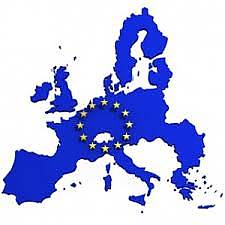State aid for environmental protection declared compatible with internal market.
Member States can grant aid for investments that increase environmental protection to levels above those set out in EU legislation, for early adaptation to future EU standards, for the decontamination of contaminated lands, for waste management and for environmental research related to all of the above. Moreover, such aid can be granted without the need for prior notification and approval by the European Commission.
EU Regulation 651/2014, ratified on June 17 by the European Commission, was published in the OJEU on June 26. The Regulation declares certain types of aid to be compatible with the internal market in application of articles 107 and 108 of the Treaty.
Through this Regulation, state aid related to environmental protection, amongst other aid measures, is declared compatible with the internal market and does not require prior notification.
The types of aid included in this category are outlined below:
Investment aid enabling companies to go beyond EU standards for environmental protection or to increase environmental protection levels in the absence of EU standards. These aided investments should enable the beneficiary to increase the level of environmental protection resulting from its activities by going beyond the applicable EU standards, irrespective of the existence of mandatory national standards that are more stringent than those of the European Union. Alternatively, in the absence of EU standards, such investments should enable the beneficiary to increase the level of environmental protection arising from its activities.
Aid may not be granted where improvements bring companies into line with Community standards already adopted and not yet in force. Additional investment costs required to go beyond applicable EU standards or to increase environmental protection levels in the absence of EU standards will be regarded as eligible costs. Aid intensity must not exceed 40% of eligible costs. Aid intensity can be increased by: 10 percentage points for aid awarded to a medium-sized enterprise; 20 percentage points for aid to a small enterprise; 15 percentage points if the investment takes place in regions with an unusually low standard of living or a serious unemployment situation; 5 percentage points if the investment takes place in certain economic regions or in the case of certain economic activities, provided that such aid does not alter trading conditions to an extent contrary to the common interest.
Aid for early adaptation to future EU standards in which the EU standards shall have been adopted, and the investment shall be implemented and finalised at least one year prior to the standard coming into force.
The eligible costs shall be the extra investment costs necessary to go beyond applicable EU standards if the implementation and finalisation take place more than three years before the date of entry into force and the aid intensity shall not exceed the following percentages: 20% of eligible costs in the case of small enterprises; 15% of eligible costs in the case of medium-sized enterprises; 10% of eligible costs in the case of large enterprises.
If the implementation and finalisation take place between one and three years before the date of entry into force of the new EU standard, the aid intensity shall not exceed the following percentages: 15% of eligible costs in the case of small enterprises; 10% of eligible costs in the case of medium-sized enterprises; 5% of eligible costs in the case of large enterprises.
Aid intensity can be increased by: 15 percentage points if the investment takes place in regions with an unusually low standard of living or a serious unemployment situation; 5 percentage points if the investment takes place in certain economic regions or in the case of certain economic activities, provided that such aid does not alter trading conditions to an extent contrary to the common interest.
With respect to investment aid for remediation of contaminated sites, the investment must lead to the repair of the environmental damage, including damage to the quality of the soil, or of surface water or groundwater. Where the person liable under the applicable law in each Member State is not identified or cannot be made to bear the costs, the person responsible for the remediation or decontamination work may receive state aid. Where the legal or physical person liable for the environmental damage under the law applicable in each Member .
State is identified, that person must finance the remediation in accordance with the ‘polluter pays’ principle, and no state aid shall be granted.
The eligible costs shall be the costs incurred for the remediation work, less the increase in the value of the land. All expenditure incurred by an enterprise in remediating its site, whether or not such expenditure can be shown as a fixed asset on its balance sheet, may be considered as eligible investment in the case of the remediation of contaminated sites. Aid intensity will not exceed 100% of eligible costs.
* published on 08/09/2014



